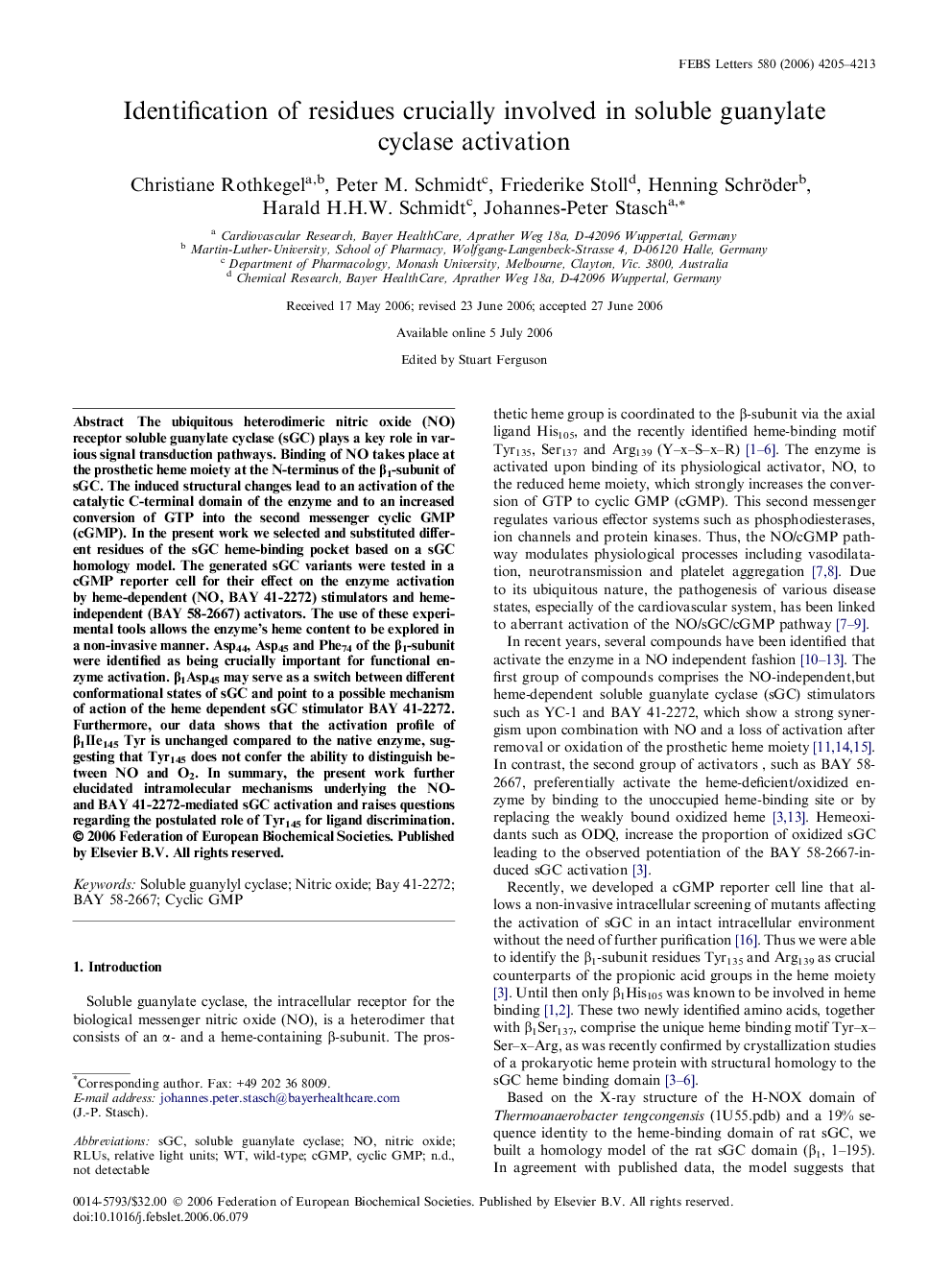| Article ID | Journal | Published Year | Pages | File Type |
|---|---|---|---|---|
| 2052665 | FEBS Letters | 2006 | 9 Pages |
The ubiquitous heterodimeric nitric oxide (NO) receptor soluble guanylate cyclase (sGC) plays a key role in various signal transduction pathways. Binding of NO takes place at the prosthetic heme moiety at the N-terminus of the β1-subunit of sGC. The induced structural changes lead to an activation of the catalytic C-terminal domain of the enzyme and to an increased conversion of GTP into the second messenger cyclic GMP (cGMP). In the present work we selected and substituted different residues of the sGC heme-binding pocket based on a sGC homology model. The generated sGC variants were tested in a cGMP reporter cell for their effect on the enzyme activation by heme-dependent (NO, BAY 41-2272) stimulators and heme-independent (BAY 58-2667) activators. The use of these experimental tools allows the enzyme’s heme content to be explored in a non-invasive manner. Asp44, Asp45 and Phe74 of the β1-subunit were identified as being crucially important for functional enzyme activation. β1Asp45 may serve as a switch between different conformational states of sGC and point to a possible mechanism of action of the heme dependent sGC stimulator BAY 41-2272. Furthermore, our data shows that the activation profile of β1IIe145 Tyr is unchanged compared to the native enzyme, suggesting that Tyr145 does not confer the ability to distinguish between NO and O2. In summary, the present work further elucidated intramolecular mechanisms underlying the NO- and BAY 41-2272-mediated sGC activation and raises questions regarding the postulated role of Tyr145 for ligand discrimination.
